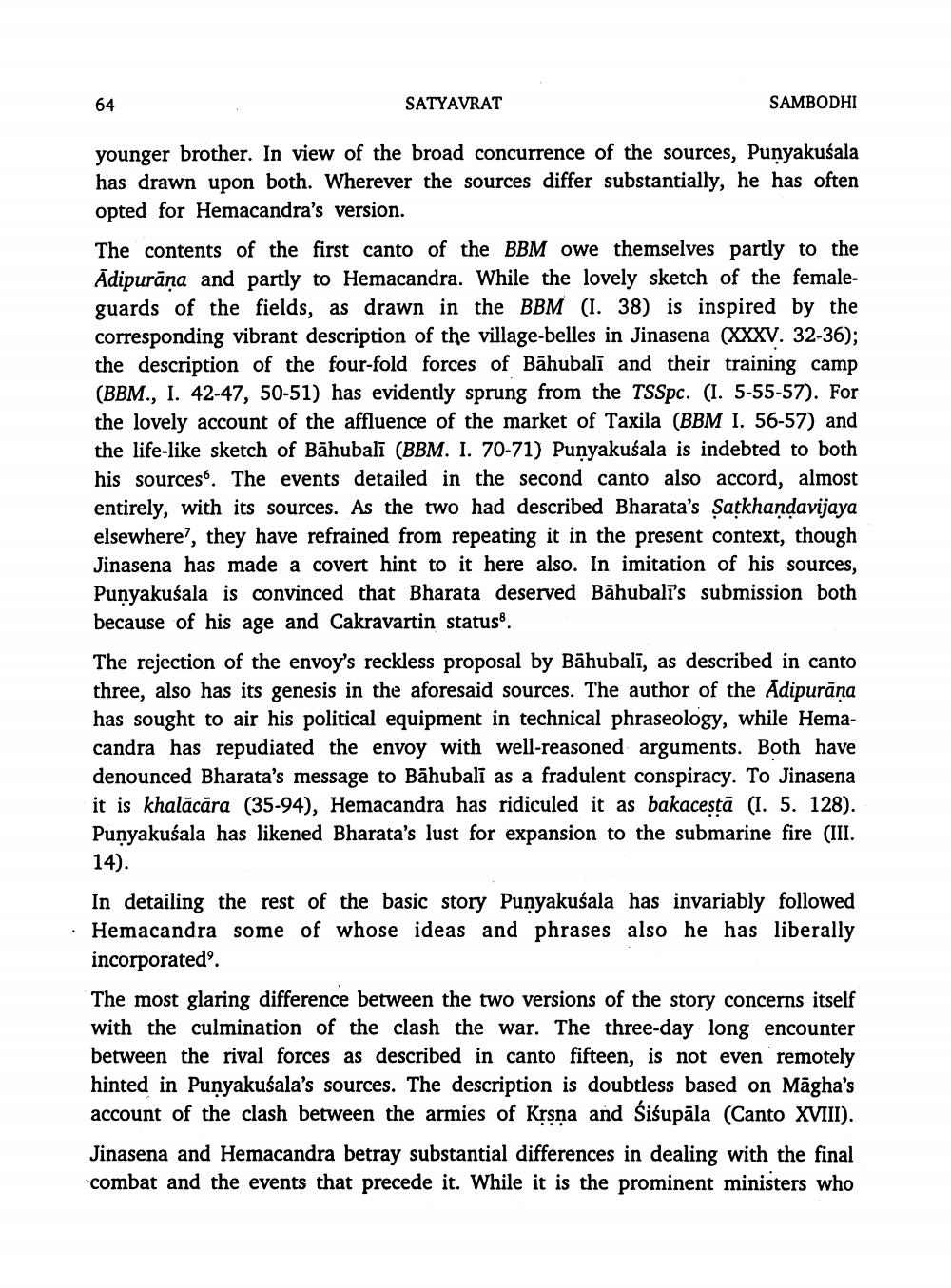________________
64
SATYAVRAT
SAMBODHI
younger brother. In view of the broad concurrence of the sources, Punyakusala has drawn upon both. Wherever the sources differ substantially, he has often opted for Hemacandra's version. The contents of the first canto of the BBM owe themselves partly to the Adipurāna and partly to Hemacandra. While the lovely sketch of the femaleguards of the fields, as drawn in the BBM (I. 38) is inspired by the corresponding vibrant description of the village-belles in Jinasena (XXXV. 32-36); the description of the four-fold forces of Bāhubali and their training camp (BBM., I. 42-47, 50-51) has evidently sprung from the TSSpc. (I. 5-55-57). For the lovely account of the affluence of the market of Taxila (BBM I. 56-57) and the life-like sketch of Bahubalī (BBM. I. 70-71) Punyakušala is indebted to both his sources. The events detailed in the second canto also accord, almost entirely, with its sources. As the two had described Bharata's Satkhandavijaya elsewhere, they have refrained from repeating it in the present context, though Jinasena has made a covert hint to it here also. In imitation of his sources, Punyakusala is convinced that Bharata deserved Bāhubali's submission both because of his age and Cakravartin status. The rejection of the envoy's reckless proposal by Bahubali, as described in canto three, also has its genesis in the aforesaid sources. The author of the Adipurāna has sought to air his political equipment in technical phraseology, while Hemacandra has repudiated the envoy with well-reasoned arguments. Both have denounced Bharata's message to Bāhubali as a fradulent conspiracy. To Jinasena it is khalācāra (35-94), Hemacandra has ridiculed it as bakacestā (1. 5. 128). Punyakušala has likened Bharata's lust for expansion to the submarine fire (III. 14).
In detailing the rest of the basic story Punyakušala has invariably followed • Hemacandra some of whose ideas and phrases also he has liberally
incorporated. The most glaring difference between the two versions of the story concerns itself with the culmination of the clash the war. The three-day long encounter between the rival forces as described in canto fifteen, is not even remotely hinted in Punyakusala's sources. The description is doubtless based on Māgha's account of the clash between the armies of Krsna and Siśupāla (Canto XVIII). Jinasena and Hemacandra betray substantial differences in dealing with the final combat and the events that precede it. While it is the prominent ministers who




